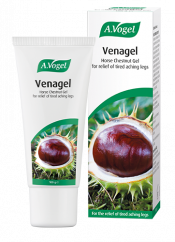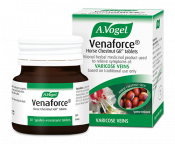Flying with varicose veins – what you need to know
'Should I fly if I suffer from varicose veins?' is one of the most common queries that pops up in relation to the condition, particularly if you want to venture abroad during the long summer months. A lot of sufferers are put off going on holiday because they are concerned that flying will increase their chances of developing deep vein thrombosis or a blood clot.
Unfortunately, there is no clear-cut answer one way or the other. There are noticeable risks that come with flying when you suffer from circulatory conditions; however, some of these may be minimal and there are certain steps that you can take to reduce your chances of developing further complications.
To help prepare you for flying with varicose veins, and to help work out if this an option for you in the first place, this blog looks at:
- Potential risks of flying for varicose veins sufferers
- What you can do to help symptoms.
What are the risks of flying with varicose veins?
Let's get the bad news out of the way first of all! There are a few issues that we should bear in mind before flying with varicose veins. Most of these concerns are slight but you should be doing everything in your power to make your experience of flying as safe and risk-free as possible.
1. Immobilisation
If you suffer from varicose veins, then you are probably already aware that you should not be inactive for a prolonged period of time. Therein lies one of the main problems associated with flying – depending on the length of your flight, you could be sitting inactive for hours.
In a publication by the World Health Organisation, or WHO, immobilisation was identified as a greater risk factor for our circulatory health than cabin pressure.1 This is because when we are sedentary for an extended period of time, blood does not flow properly, which can increase the risk of developing a blood clot.
A.Vogel Self-Care Tip: Keep comfortable when travelling with varicose veins
Learn more about my tips for maintaining good circulation whilst traveling in this short video.
2. Cabin pressure
When you fly by aeroplane, the cabins are pressurised to ensure that you receive a steady supply of oxygen. However, this pressure is less than we experience on the ground, which means that the body is not absorbing as much oxygen as it usually would. This exacerbates any existing circulation problems, slowing down the flow of blood and increasing your chances of developing complications.
3. Limited leg room
Leg space is a precious commodity on board any aeroplane but, unfortunately, unless you are willing to pay a bit extra, most airlines don't provide much in the way of leg room. This can be uncomfortable enough, but in sufferers of varicose veins it can contribute towards poor circulation and immobility. If you are unable to stretch or move your legs properly, it can affect your circulation and, yet again, raise the risk of more serious medical conditions like deep vein thrombosis.
4. Stress
Flying can be an incredibly stressful experience – you are essentially being crammed into a tin can suspended thousands of feet above the ground and forced to sit next to complete strangers whilst enjoying whatever delights the airline deems edible. Even if you are not a nervous flyer, you can still feel anxious about travelling with varicose veins.
5. Dehydration
The biggest cause of dehydration whilst travelling by air isn't due to overindulging in complimentary champagne: it's the low humidity present in the cabins. In ordinary situations, indoor humidity levels vary between 30-65%. However, the humidity present in plane cabins is normally between 10-20% so it's easy to see why so many people become dehydrated whilst travelling.
Dehydration can worsen your varicose veins as it could potentially slow down your blood flow.
What to do about varicose veins when travelling
On to the good news now – there are ways of reducing your risk of developing complications like dehydration and blood clots. The helpful tips outlined below should help you to cope with your varicose veins whilst on-board an aeroplane and ensure you have a safe flight.
1. Use Horse Chestnut
Venaforce is our herbal remedy specifically aimed at the treatment of varicose veins. Made using fresh extracts of horse chestnut, this solution helps to provide relief from some of the more uncomfortable symptoms of varicose veins, such as cramping and swelling. The product can be taken by adults over the age of 18, providing they are not allergic to peanuts or soy, nor are they pregnant, breastfeeding or suffering from varicose leg ulcers.
Another handy product to have in your carry-on luggage is Venagel, which provides cooling relief from varicose veins symptoms.
2. Wear compression stocking
Compression stockings are available in most pharmacies and retailers and work by gently applying pressure to your legs, stimulating the flow of blood and improving your circulation. You can even purchase specialised 'flight socks', which are specifically designed to reduce your risk of developing deep veined thrombosis during flights.
3. Wear comfortable clothing
If you plan on flying with varicose veins, then wearing a pair of tight skinny jeans is probably not a sensible option. Nothing you choose to put on should be restricting your blood flow in any way so try to stick with loose, comfortable clothes that enable your body to breathe and avoid putting pressure on your legs. Also, the same goes for our feet – opt for comfortable, adjustable shows that will allow you to take any pressure off if necessary.
4. Do leg exercises
If you suffer from varicose veins then you should consider paying a little more for seats with added leg room. Not only will this prevent you from being uncomfortably crammed into a corner, but it will also enable you to practise a few simple leg exercises whilst you are flying. This promotes blood circulation and helps to prevent complications like blood clots and deep veined thrombosis from developing.
5. Drink plenty of fluids
Throughout your flight, make sure that you are drinking plenty of fluids in order to avoid dehydration. This will keep your immune system nourished and may even improve your blood circulation, reduce the chance of clots worsening and help you to feel more refreshed and invigorated.
6. Relax
This is very important to remember, even if you are not a nervous flyer. Try to keep yourself calm by either reading a good book or practicing a few simple breathing exercises. Ignore the urge to take sleep tablets as these will only increase your susceptibility to immobility.
If you feel you'd benefit from some form of stress relief, try our AvenaCalm tincture. This remedy is completely natural and should enable you to feel calm and in control during your flight.
References
1 https://www.who.int/cardiovascular_diseases/wright_project/phase1_report/WRIGHT%20REPORT.pdf
Originally published 11 August 2016 (updated 17 July 2020)










